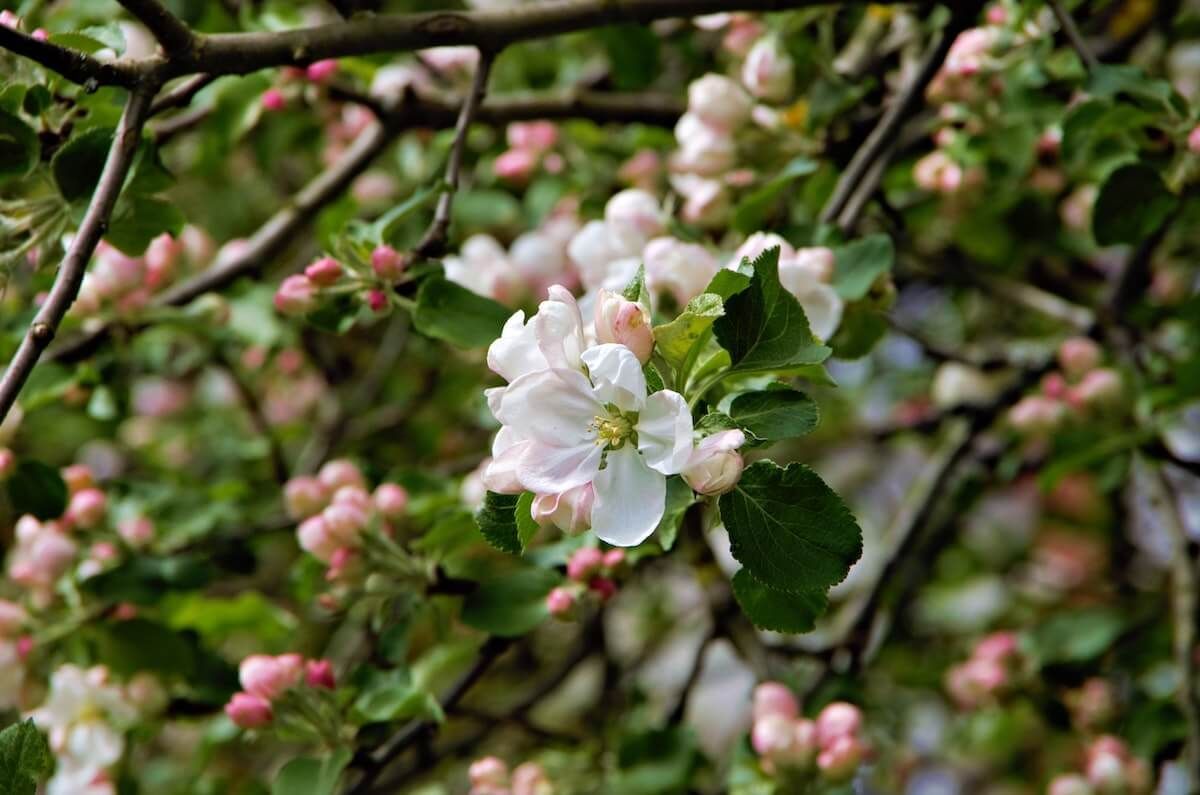How to Pest Control in Your Lawn & Garden
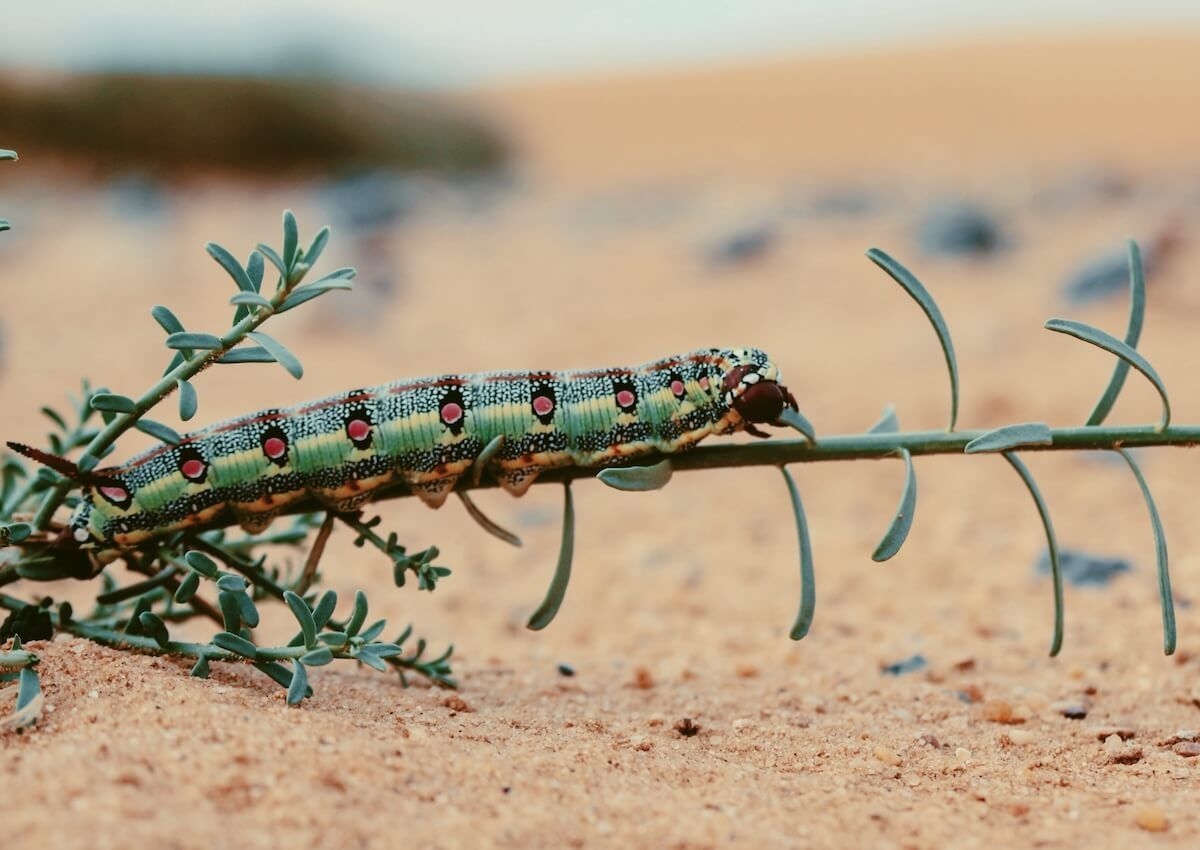
The following describes some of the more common pests, and what can be done to control them.
Armyworms
These caterpillars are found in dense groupings. They feed on grass and make a circular area. The armyworm is up to 1 1/2 inches long, with green, tan, or black stripes on its back. They cause damage from spring through late summer.
Probably the best protection from the armyworm is a well-maintained lawn. If you feed and water your lawn regularly and apply a slow-release urea formaldehyde, these pests shouldn’t be a problem. However, if you see signs of extensive feeding, you should use Diazinon for quick control.
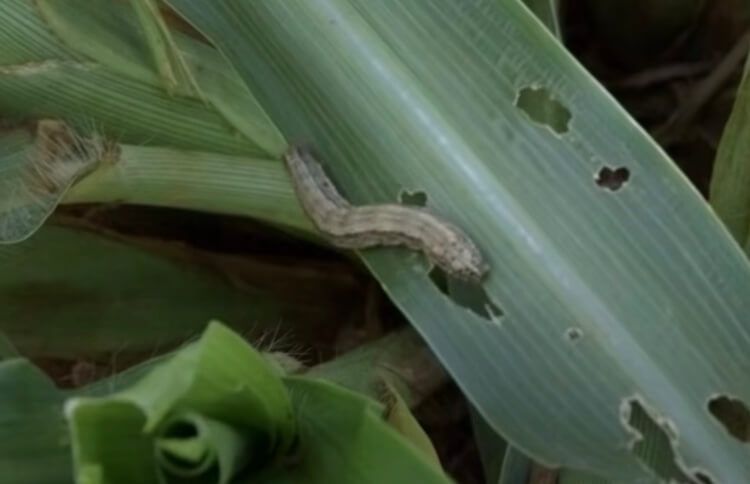
Billbugs
These bugs are about 1/4 to 3/4 inches long and black or reddish in color. They have long snouts and chew holes in the stems of grass.
They also deposit eggs in the grass for more billbugs to hatch. The eggs hatch as chunky, legless larvae, which puncture stems and crowns of grass as they feed. They will kill grass in patches and break off grass blades at the soil line.
The best control is to treat with Diazinon or carbaryl to control adult beetles. Larvae can be treated in early summer, to prevent the development into adult billbugs.
Helpful Article: 7 Tips: Organic Pest-Control
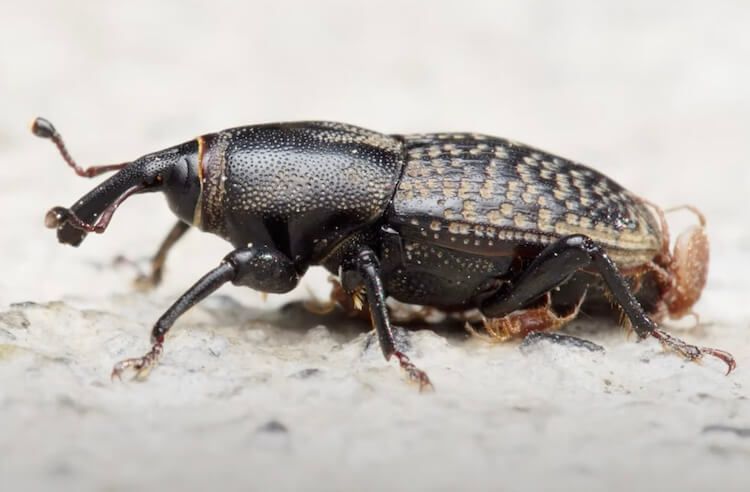
Chinch Bugs
Adult chinch bugs have black bodies with white wings and red legs. Nymphs grow from very small to 1/8-inch-long adults.
They prefer dry, sunny areas for feeding. Chinch bugs feed at all stages of their development and leave large yellowish-to-brown patches in their paths as they feed.
They do not thrive in well-fed lawns. If you have an infestation of chinch bugs, you may treat both generations in June and August with Diazinon or carbaryl.
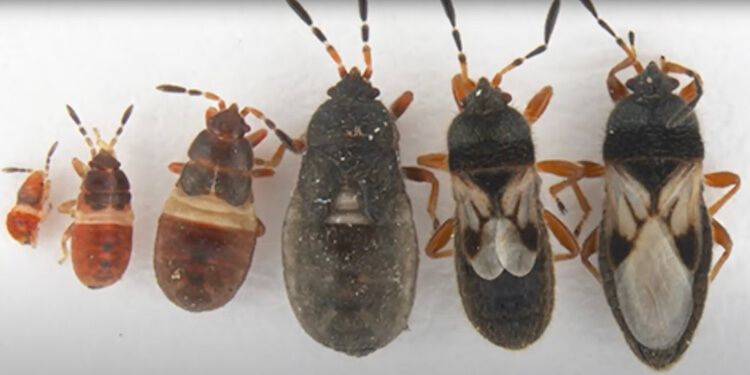
Cutworms
These smooth grayish or sometimes brownish caterpillars grow up to two inches long. They feed at night after hiding under the protective covering of grass during the day.
They cut the grass off at the soil line and will cause problems from spring through late summer if they infect your yard. Since they eat away grass stems at the soil line, they leave small dead spots in their trail.
If these caterpillars affect your yard and the area is small, you can control them by puddling water to bring the worms to the surface.
Then the worms may be collected and destroyed. If your area is larger, you may need to control it with Diazinon or carbaryl.
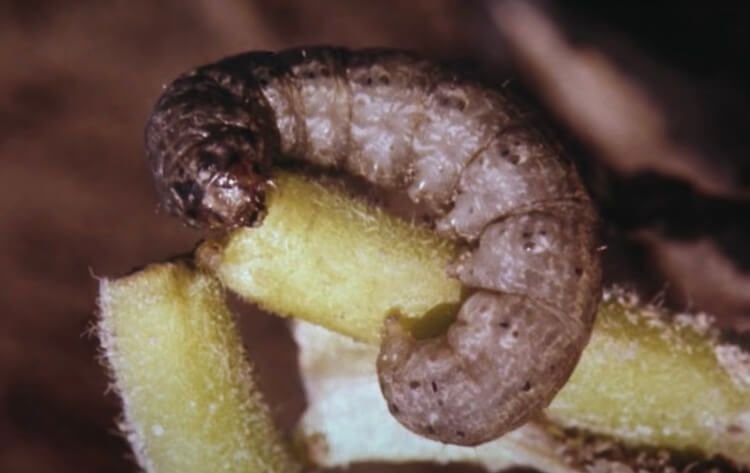
Grubs
Grubs are the larvae of beetles. They are thick and whitish, and when dug up, they are C-shaped. They vary in size from 3/4 inch to 1 1/2 inch in length and they eat the grass roots leaving large dead patches of lawn.
If your grubs infest a small area, cut away the section of infected sod, then pick up and destroy the underlying grubs. If the infestation is severe, Diazinon will be the most effective control.
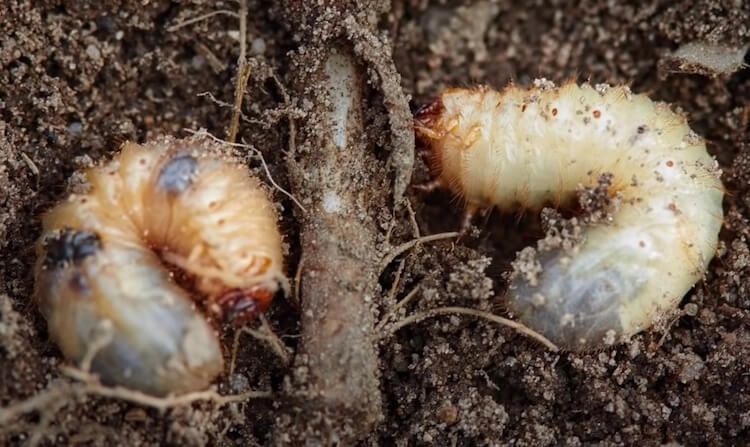
Leafhoppers
These are yellowish, brown, or green wedge-shaped insects and are less than 1/2 inch in length. When you walk across your lawn, they jump and fly away.
These insects can be found mostly on the East and West coasts of the U.S. but can be found anywhere in the United States.
They suck the juices from the grass leaves, causing them to turn white, then yellow, and finally brown.
Leafhoppers should be controlled with Diazinon or carbaryl due to their massive numbers when infected.
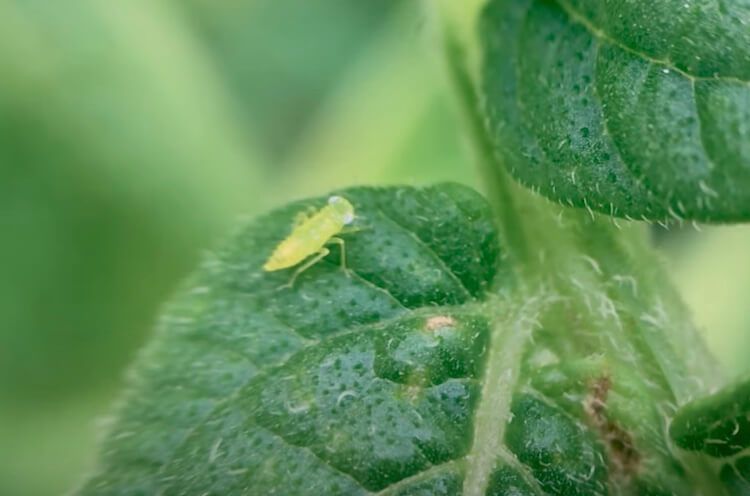
Mites
Clover mites are tiny red specks that are found in lawns and other plants across the country. Bermuda grass mites are also very small but are pale green instead of red.
The Bermuda grass mites are found mostly in Gulf Coast areas and in western lawns. All mites are extremely small and sometimes hard to see.
These spiderlike bugs suck the juices from the grass leaves, leaving the grass wilted. It eventually turns yellow and then dies.
Heavy fertilization can actually attract mites due to the extra juice in the grass. Avoid heavily fertilizing your lawn and control these pests with Diazinon at the first sign of infestation.
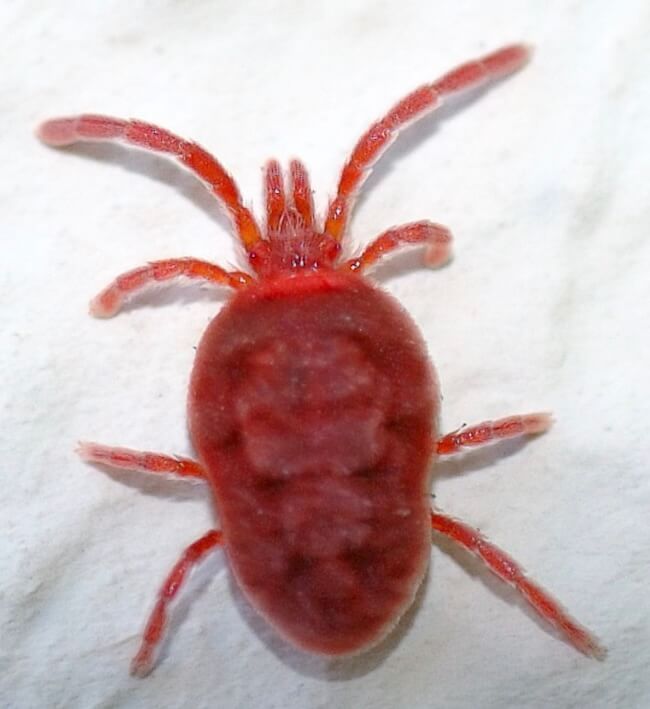
Mole Crickets
These are brownish insects that grow to about 1 1/2 inches in length. They are mostly a problem in southern lawns.
They’ll cut off underground stems and roots during the day and work on other stems at night. They leave the lawn with areas that appear to be closely clipped. These pests thrive in moist warm weather.
The only efficient control is Diazinon.
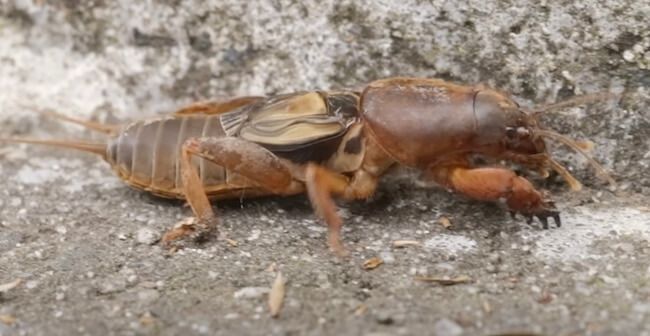
Nematodes
These roundworms are transparent with a whitish or yellowish tint to them. Often they are microscopic and their presence may not be realized until a bleached-out area of the lawn is present.
These pests feed mainly on grass roots, but will occasionally feed on stems and leaves. The disease may set into your lawn because of the weakened turf.
The best way to control nematodes is to suppress them. Keep your turf well-fed and water on a schedule. Nematodes will not require chemical treatments for control.
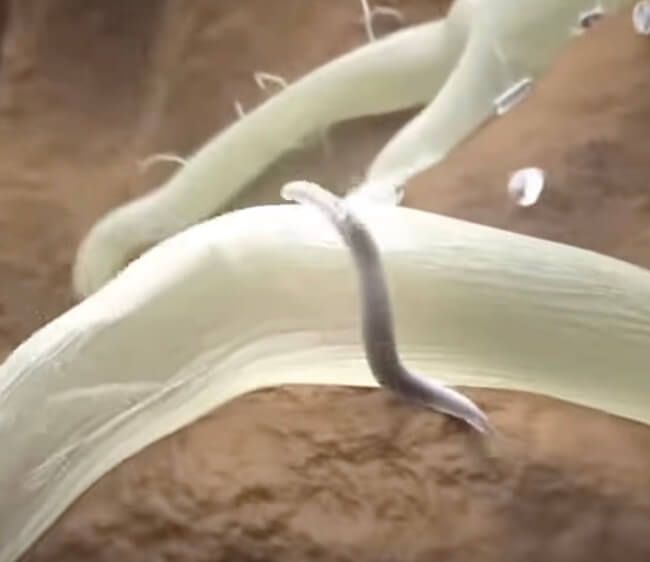
Sod Webworms
These tan-colored moths, about 3/4 inches long, lay eggs at dusk. The eggs hatch into gray or light brown larvae and grow up to one inch long while feeding on blue and bent grasses.
They do most of their damage from spring into mid-summer by feeding on the shoots and crowns of the grasses. This causes irregularly shaped, closely clipped brown patches.
The best control of these webworms is with carbaryl or Diazinon when the larvae are present.
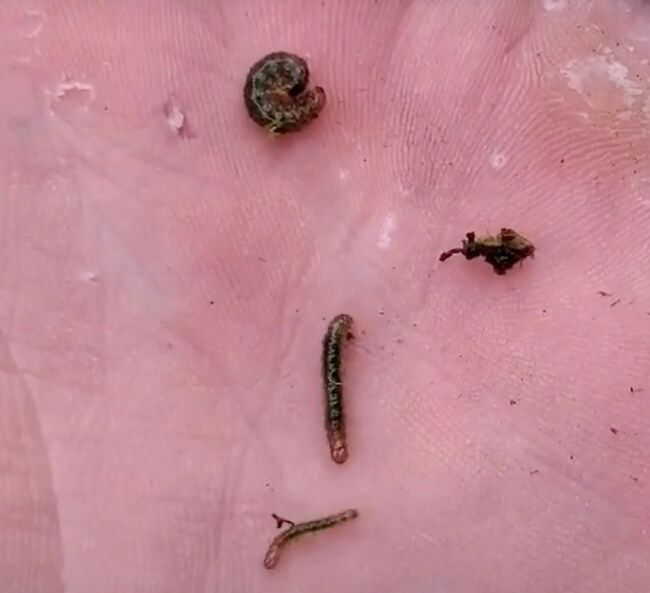
Compare Products
Last update on 2024-12-12 / Affiliate links / Images, Product Titles, and Product Highlights from Amazon Product Advertising API











